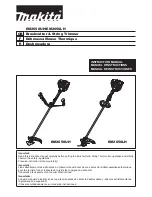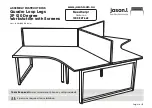
Version 10.12.2019
WERAC Elektronik GmbH
page 11
6.6
Cascadable systems
It is possible to connect up to two light grids one after another. The maximum number of 190
lines may not be exceeded in this case. The operator must be able to see all the areas
protected by the cascade when pressing the start button.
An example is the protection of the front and rear of a machine or a combination of vertical,
inclined and horizontal light grids.
The individual light grids can be directly connected to each other. An extension cable with a
length of 0.3 to 2 metres can also be intermediately connected.
The last system of the cascade corresponds to the standard design without a cable outlet. The
upstream light grids have a cable entry and cable outlet.
Note:
If a guarded area is formed by more than one light grid, no insecure areas may be
located between the light grids. If necessary, additional measures such as
mechanical guards are implemented.
6.7
Deflector mirror
Special problems can be considered with a reduced width of guarded area by means of 1 or
max. 2 deflector mirrors.
6.8
Optical bypassing
To prevent optical bypassing, a minimum distance A of the optical axis to reflective surfaces
must be complied with. Read off the value in the diagram for your distance D between the
emitter and receiver to determine the minimum distance A.
6.9
Assembly of the emitters and receivers
The explanatory remarks on the safety distance and the mounting height in the previous
sections must be considered. All mounting positions are permissible, e.g. cable connection
from above or below. There are two possibilities for mounting:
6.9.1 Rail mounting
There are two seamless profiled grooves on the rear of the housing of the emitters and
receivers. The retainer blocks WHK1 can be positioned at any desired point and clamped in
place by means of an M4 grub screw. 2 retainer blocks are required up to a system length of
1200 mm. These are mounted approx. 100 mm from the edge. An additional retainer block is
required above 1200 mm to 2000 mm. This is mounted in the centre. We supply a suitable
Reflective surface
D
A
2° = 4° (=Typ4)
Fig. 9: Principle of optical bypassing
262
0
200
400
600
0
1
2
3
4
5
6
7
8
9
D in m
A
i
n
m
m
SAFETY 40
131
Fig. 10: Minimum distance to reflective surfaces
Fig. 8:
Cascadable systems











































